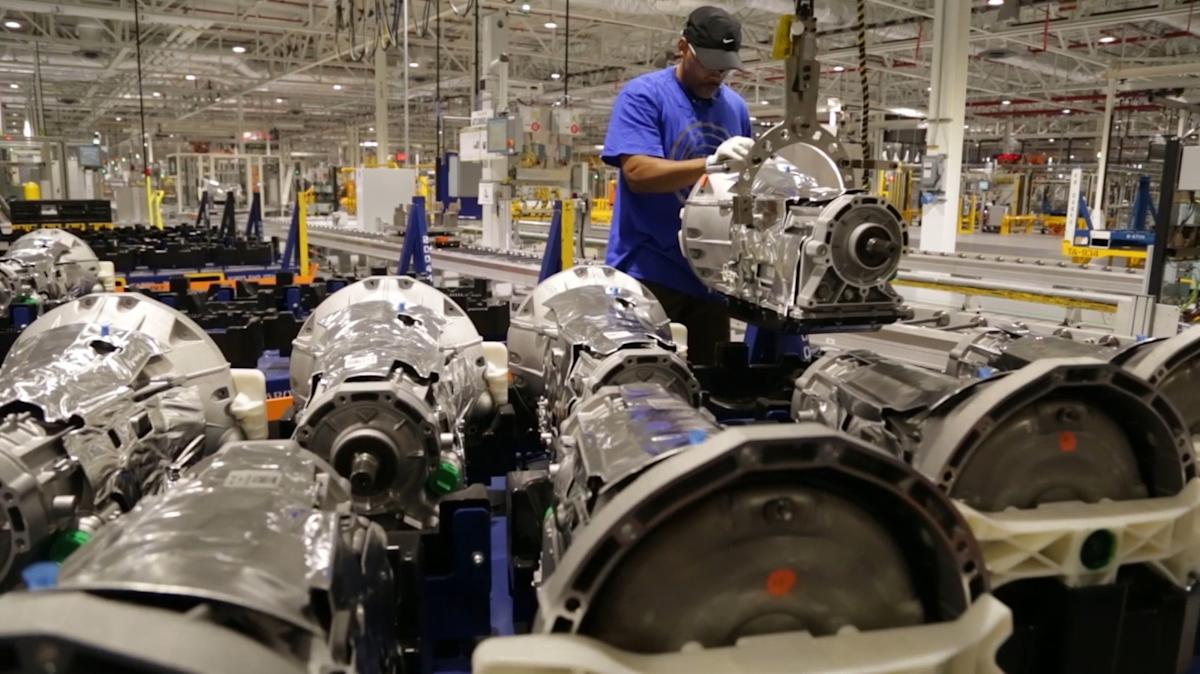
Car and truck buyers looking for a transmission to maximize acceleration and efficiency (without resorting to a droning continuously variable transmission [CVT]) may turn to Ford and GM’s 10-speed automatic. The reason the same basic transmission is in both manufacturers’ offerings is that it’s a “let’s bury the hatchet, but not in each other” collaborative effort. Ford led the engineering, though, and we’re focusing mainly its transmissions here.
Ford introduced its 10-speed for the 2017 model year, and, as Douglas Adams wrote in “The Restaurant at the End of the Universe,” “This has made a lot of people angry and been widely regarded as a bad move.” The most common problem seems to be CDF drum bushings shifting out of position. When this happens, it’ll destroy a Teflon seal, letting fluids reach holes they shouldn’t.
In December 2022, Ford introduced a new CDF drum with a lip that holds the bushing in place, which retains the transmission’s fluids like a little Hoover Dam. Then, Ford anodized the aluminum outer shell because the original, softer, non-anodized shells would get eaten up by the clutches, and also refreshed software tuning to mitigate harsh shifts. Ford also issued recalls, including one in 2023 because some transmissions wouldn’t stay in park, creating a rollaway risk. And because 2025 is the year of Ford setting records with its recalls, of course, there was another recall in March that tackled unintended forward movement in neutral and reverse.
As for GM versions, they have their own quirks and problems because of some design differences, such as magnetic manual valves for actuating shifts and internal filters that are harder to access. Complaints for GM’s 10-speeds include sudden shifts to higher or lower gears with no user input, poor throttle response, fluid leaks, shudders, odd noises, and overheating.
Read more: Call Me A Luddite, But These Modern Features Only Seem To Make Cars Worse
Class action lawsuits aplenty
A close-up of Lady Justice’s scales with the rest of the statue and the United States Constitution out of focus in background – Mehaniq/Shutterstock
Despite all the factory fixes, though, some class-action lawsuits posit that the updates haven’t quelled the jankiness. You’re not surprised that there are lawsuits against Ford, right? America may not be quite the land of litigation that popular culture paints it as, but this country does expect its cars to work and will go to court over it. In addition to the 10-speed lawsuits, there have been suits over the Mustang GT’s Getrag MT82 six-speed slipping, jerking, and wearing prematurely; the Shelby GT350 not being the track monster Ford advertised it as; defects in the Explorer’s rear subframe; and, most famously, the burst-into-flames-prone Pinto.
In January 2025, Ford was slapped with a wrongful death suit that claimed a Texas man was crushed by his 2023 F-150 when it started rolling despite being in park. Yes, this is like what happened to “Star Trek” actor Anton Yelchin with his Jeep Grand Cherokee, something that’s apparently still a problem for EV Dodge Chargers and Jeep Wagoneer Ss. Ford sent out a recall notice regarding the problem, targeting 2022 and 2023 Broncos, Explorers, F-150s, and Mustangs, as well as 2023 Lincoln Aviators. According to the notice, dealers are to inspect the transmissions and, if a replacement is needed, swap in a new one for free. The issue stems from a loose bolt that can keep the transmission from going into park, even though the shifter shows that it is.
Next Gen Drivetrain, a transmission shop out of Lancaster, Pennsylvania, lists other, less common issues, such as the Ford 10-speed’s torque converter clutch fatiguing, cross-leakage in the valve bodies, failing oil pumps due to inadequate filtration, “E” and “B” clutches that are too small, and higher-than-optimal operating temperatures thanks to an insufficiently sized oil pan.
Technical Service Bulletins galore

A Ford 10-speed transmission as it’s being assembled in the Livonia Transmission Plant – Ford Motor Company
There’s an astounding number of Technical Service Bulletins (TSBs), and if you’re worried about your specific 10R60/10R80/10R100/10R140 transmission, you can use Ford’s Technical Service Information site to look up your vehicle. There’s 2023’s TSB 22-2428, which attempts to mitigate harsh/delayed shifting/engagement by updating the power-train control module (PCM) or transmission control module (TCM) software, sticking valves in the valve body, or the aforementioned CDF drum bushings. In 2025, TSB 25-2045 tackled the 2021-to-2024 F-150 transmission’s problems shifting out of gear, among other not-ideal situations. TSB 25-2429 just came out on September 12, and, no surprise, aims squarely at 10R80 harsh/delayed shifting/engagement.
Despite the myriad documented issues with the transmission, if you read the forums, you may notice that experiences vary widely. Some owners are chugging along with well north of 100,000 miles, and even 150,000 miles on their transmissions, wondering what all the fuss is about. Others had shifting problems not much after 10,000 miles and needed repairs.
What’s frustrating is that a 10-speed transmission can offer excellent fuel efficiency and close ratios for quick acceleration, so it would be lovely to see these transmissions get the long-term fixes they need from the factory and exhibit across-the-board reliability. And no, CVTs aren’t a viable alternative, at least with current tech. Even if you don’t mind the fake gear changes some CVTs perform, you can’t put one behind Ford’s Power Stroke Diesel with 1,200 pound-feet of torque unless you like snapping belts. Heck, Nissan’s “high torque” Extroid CVT can only handle 286 lb-ft. Maybe Ford and GM should start over and take a cue from “Spın̈al Tap,” making the next transmission go to 11.
Want more like this? Join the Jalopnik newsletter to get the latest auto news sent straight to your inbox…
Read the original article on Jalopnik.



